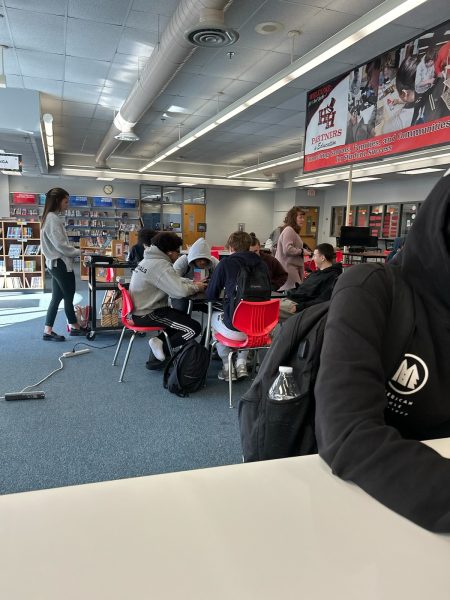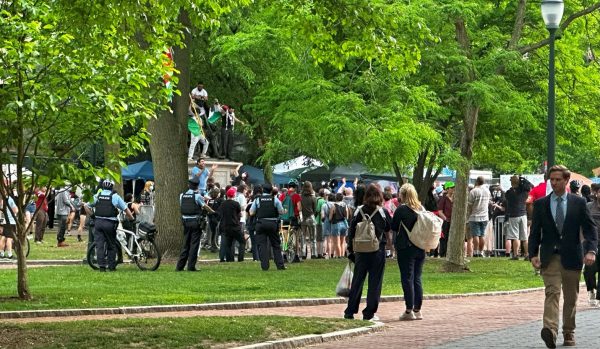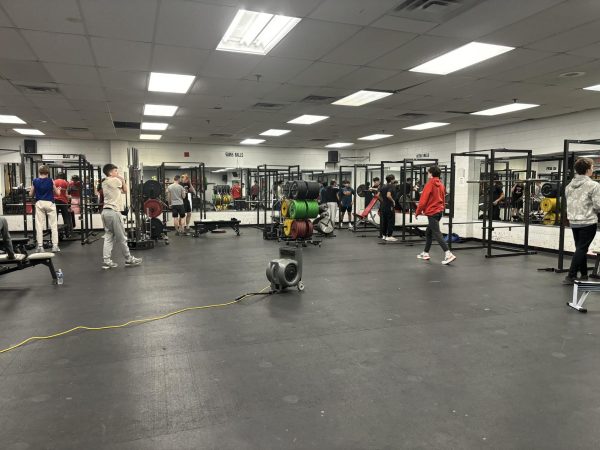A New Horizon

The latest outbreak of the COVID-19 Omicron strain that started the week leading into the holiday break and continued into the week post-holiday break has some students and faculty wondering: will history repeat itself?
After hearing student opinions and talking with administration, we feel that even with the spike in COVID cases, the administration is doing everything they can to create a safer and better learning environment for all students and faculty than last year. Therefore, a school closure is not necessary considering the current plans in place.
Last year, the pandemic led to a virtual/ hybrid schedule, but this year, the district plans to continue in-person learning for the entirety of the year. Dr. David Weber, the Director of Curriculum, said, “I think if we didn’t feel like we couldn’t keep a building open, it would probably be for a relatively short term or two to three days.”
And although the school managed to stay open during its peak of cases, with several teachers out of the building, it’s been hard to get help–especially with finals just around the corner. Many students who were out for quarantine have expressed such difficulties.
Senior Talia Newman explained, “My quarantine experience was frustrating. I feel behind in all of my classes, and even though my teachers were understanding, it was extremely overwhelming.”
So, quarantined students remain at a disadvantage because quarantine students are completely cut off from their classes. While the updated guidance on Jan. 11 indicated that in accordance with the MCOPH’s Mask to Stay guidance, asymptomatic staff and students who have had a COVID exposure outside of their household can continue to attend school in person. Talia suggested, “The school should bring back virtual class as an option for the students who have COVID so they do not fall behind in their classes.”
Junior Seth Cooper agreed, “During my quarantine, my teachers were very understanding and most of them told me they would help with the work I missed when I returned. However, having a virtual option would have helped me a lot by being able to ask questions [in class] and work on group projects.”
Head principal Mr. Dennis Williams explained, “We are asking teachers to evaluate their classroom setting and create a livestream option for students to still be a part of class, if necessary. Some accelerated and AP classes have already done this.”
However, virtual classrooms cannot be readily available to all students because “There are these unintended consequences. For example, once kids know they can tune in from home, they stop coming, a problem that occured last year.”
The cafeteria has also led to some concern among students regarding social distancing and masking. Talia said, “During lunch there seems to be no COVID rules since everyone sits next to each other unmasked.”
In addition, sophomore Sneha Indrakanti said, “We need to keep people more separate. It feels like we’re doing what we did two years ago with masks and [now masks are not as effective].”
Administration, though, has been slowly working with funding from the CARES Act to reshape the cafeteria environment to make it safer and more comfortable for students.
Mr. Williams explained, “We would love to have the possibility of eliminating the tables and switching to round tables and booths, add some additional outside seating with heaters and additional covering. Lunch became a significant concern once the weather changed and everyone had to come inside.”
These necessary changes are being made to alleviate concerns students have over safety in the cafeteria.
Despite many students and faculty being vaccinated, many are beginning to question what being fully vaccinated means. As of now, according to an article published in December by the New York Times, the CDC defines fully vaccinated as having both initial doses of the Pfizer, Moderna or Johnson & Johnson vaccines. However, based on another article written by Medical News Today, as the Omicron variant spreads, many worry that this will not be enough protection against the virus. According to a new study, after six months of being vaccinated, antibodies found throughout the body are reduced to 57%. Getting the booster vaccine will help better protect against the virus and immunity. In a recent newsletter, the district updated its definition of fully vaccinated to mean having a booster shot if able.
Thankfully, the school district does offer relatively accurate and up-to-date information on its COVID-19 dashboard on its website. This dashboard is updated twice daily due to the recent surge of cases, with information regarding the total number of active district positive cases, the number of people quarantining per week, how many are in quarantining in each building and the specific time of day and date when the dashboard was last updated. During the week of the spike, numbers jumped from a total of 30 new quarantines on Jan. 3 to 59 new quarantines on Jan. 4. Dr. Weber said, “We have a separate database for our nurses and others to record positive cases. We were hit with an immediate backlog when we came back from break, but I think we’re getting close to catching up on that.”
With the updated CDC guidelines, virtual options for quarantining students and new renovation plans for the cafeteria, staying in school is the best option for making this year as close to normal as possible. Mr. Williams explains, “The hardest part this year has been the uncertainty and moving targets. But we are all going through the same thing–the teachers, students, and other districts.” However, hopefully with a few new changes and continued communication with the students and parents, Mr. Williams said, “normal is on the horizon.”





